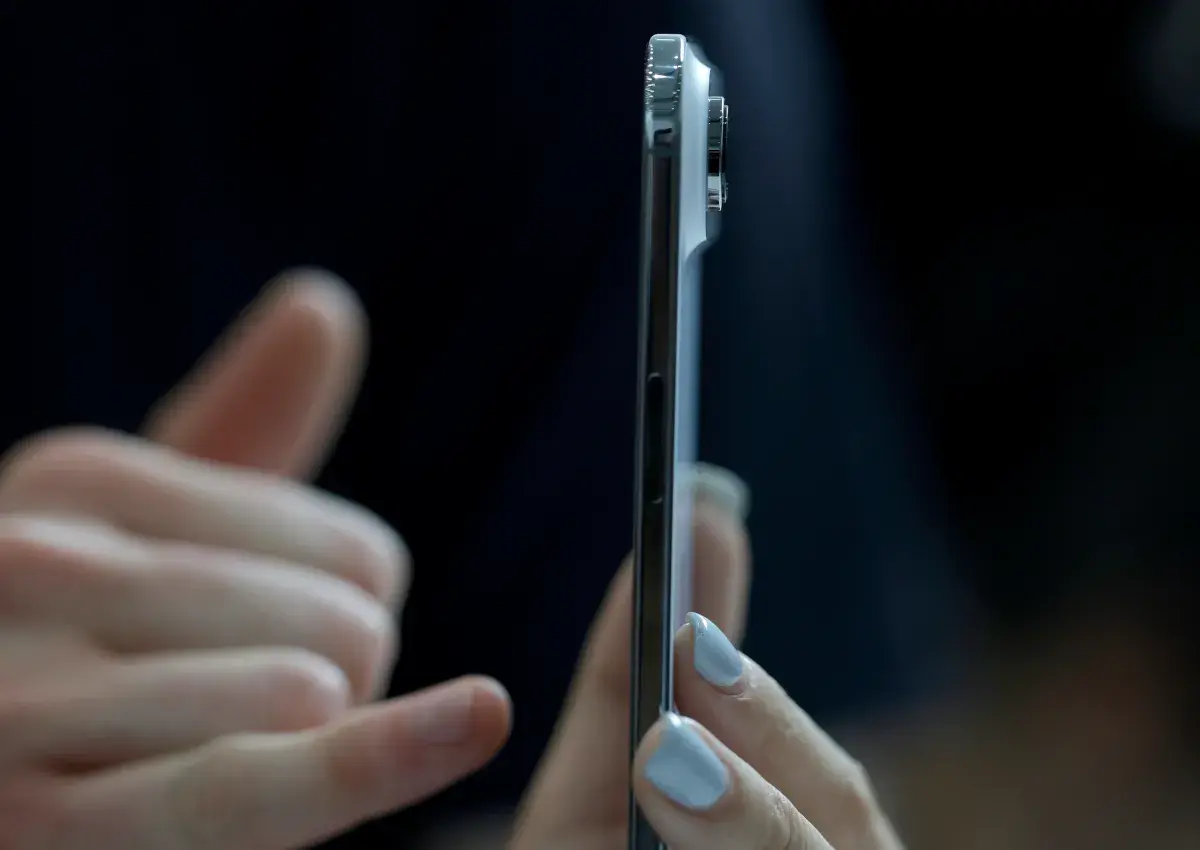
The iPhone 17 had been on Apple Store shelves for less than a day before the complaints began.
From Shanghai to New York, shoppers found launch-day display models—especially the deep blue Pro and black Air variants—already scuffed and scratched within hours of being unboxed.
The backlash, quickly dubbed “Scratchgate” on social media, spread fast. Users posted photos of scratched devices and slammed Apple for abandoning titanium just a year after touting it as the future—only to return to aluminum.
Speculation quickly turned to Apple’s motives. Some pointed to tariffs, while others questioned whether the company had sacrificed durability for cost. Asked about it on CNBC, CEO Tim Cook dismissed the idea:
“There’s no increase for tariffs in the prices, to be totally clear,” Cook said.
Cook hasn’t directly addressed the scratches, but analysts say the switch wasn’t about tariffs alone. According to supply chain experts at IDC and Counterpoint Research, it was driven by engineering needs, cost management, and Apple’s push to reduce trade risks.
“With the titanium versions, Apple discovered that titanium isn’t an ideal material for managing heat,” Francisco Jeronimo, Vice President of Devices and Data Analytics at IDC Europe, told Newsweek. “Now, with more powerful chips and Apple Intelligence, there’s much more computing happening on the device, which generates additional heat—and titanium doesn’t dissipate it effectively.”
Apple once touted titanium for durability, but many iPhone 16 users complained their phones overheated. With on-device AI and heavier processing loads, aluminum—paired with a vapor chamber cooling system and a new unibody chassis—offered a more practical solution, even if it scratches more easily.
Newsweek reached out to Apple for comment on Monday.
Who Pays the Price?
The material shift also fits neatly into Apple’s tariff strategy. While Trump-era tariffs on raw aluminum and steel don’t apply to finished smartphones, a 10 percent tariff on Chinese-made electronics does. Apple avoided this by moving mass production of the iPhone 17 lineup to India, where all U.S.-bound units are now assembled.
“Apple is diversifying its production footprint to avoid geopolitical risk,” said Jeronimo. “Aluminum is easier to source and process in multiple countries—especially in India and Southeast Asia. Titanium machining, by contrast, was heavily tied to China.”
Apple’s titanium supply chain was deeply China-dependent. According to Wired, 8 of the 13 key companies that process Apple’s metal components operate predominantly in China. While finished goods aren’t tariffed the same way, reliance on Chinese suppliers left Apple vulnerable to future disruptions. Aluminum, by contrast, gives Apple more flexibility to scale production across regions.
Only the ultra-thin iPhone 17 Air now uses a titanium-aluminum alloy. The 17 and 17 Pro have reverted to 7000-series aluminum, which is lighter, cheaper, and easier to machine at scale. That change, experts say, gives Apple more flexibility as tariffs and politics reshape global trade.
“There’s no scenario where Apple can afford to rely on just one country anymore,” Jeronimo said. “Even if U.S.-China relations stabilize, the risk of future disruptions means companies like Apple are building more resilient supply chains now.”
That strategy appears to be working. Despite rising component costs, Apple kept iPhone 17 prices mostly flat in the U.S., while doubling base storage on some models. Analysts credit efficient production outside China and the use of more scalable materials.
More Than Metal
Apple’s rebalancing goes beyond materials, experts argue.
“The iPhone is no longer just a commercial product—it’s a geopolitical tool,” said Ankur Bisen, a senior partner at The Knowledge Company, in an interview with Rest of World. “Shifting production to India is about reducing Apple’s exposure to China in the long term.”
That view is echoed by Chiew Le Xuan, a research manager at Omdia, who noted that India-built iPhones now account for nearly half of all U.S.-bound units. “The motivation is clear,” Le Xuan told Rest of World. “U.S. tariffs have already added about $900 million in costs this year, and Apple is mitigating that risk wherever it can.”
Cook acknowledged in August that Apple incurred roughly $800 million in tariff-related expenses during the June quarter, a figure expected to hit $1.1 billion for Q3. Still, the company insists those costs didn’t drive the iPhone 17 Pro’s higher starting price.
Critics remain skeptical. Online, some see Apple’s silence on Scratchgate and the aluminum shift as proof that design compromises and cost savings—not customer experience—drove the decision.
“So, we lost titanium, got scratches, and paid $100 more,” one Reddit user wrote. “Feels like we’re paying the tariff after all—just indirectly.”



